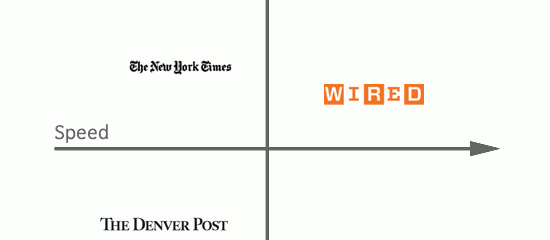I’m betting “Apple’s WWDC 2011 Announced Yesterday But Sold Out As We Went to Press” is not likely to be a headline found in my local news’ Business & Technology section this morning.
Not only will the story have already have come and gone, the dead tree newspaper will likely not even bother mentioning anything. The New York Times hasn’t posted anything about it. I can’t find anything in the Washington Post about it, either. Luckily nobody is relying on any of these outlets for announcements like this (as 10 hours after the fact is already far too late). This is not a newspapers-are-dead diatribe, it’s just that this is the kind of story that I find interesting and relevant. I would pay someone to deliver this story to me in a concise and timely manner.
Certainly, there are much more important things going on in the world lately. I do appreciate what these mainstream news organizations are doing instead: they are reporting from (and sometimes captured) behind enemy lines, sharing both important and mundane events through photography, and much more.
Here’s a graph I made to try and understand some of the common sources of news I encounter:
I’m not quite sure what to make of all this. But, I realize that timing is just one of many factors in the evolution of journalism: I heard about the WWDC announcement while checking twitter before getting out of bed this morning (long before I even received the announcement email from Apple). Though, I’ve waited until now to read in-depth stories on nuclear reactors and the Japan earthquakes. This, of course, is despite my ability to have watched, in real-time, a tsunami wave land on the east coast. I don’t know where to go to strike a good balance






